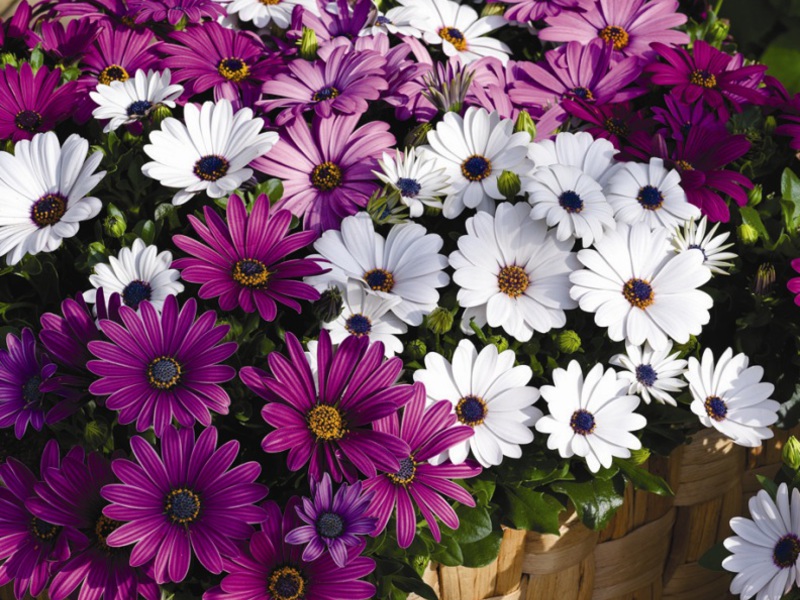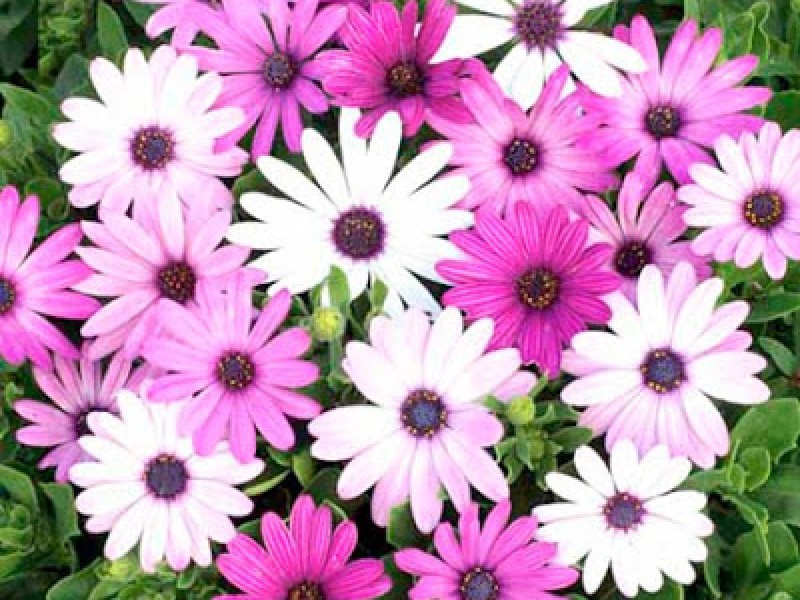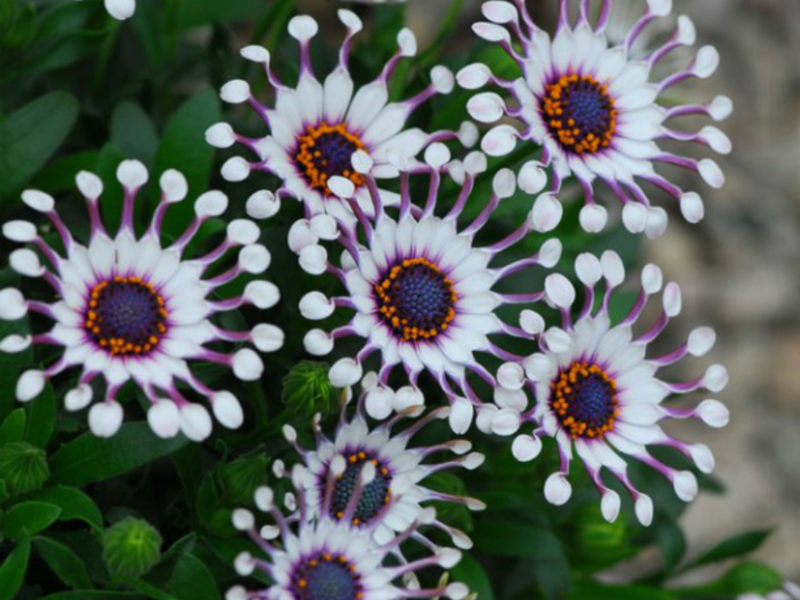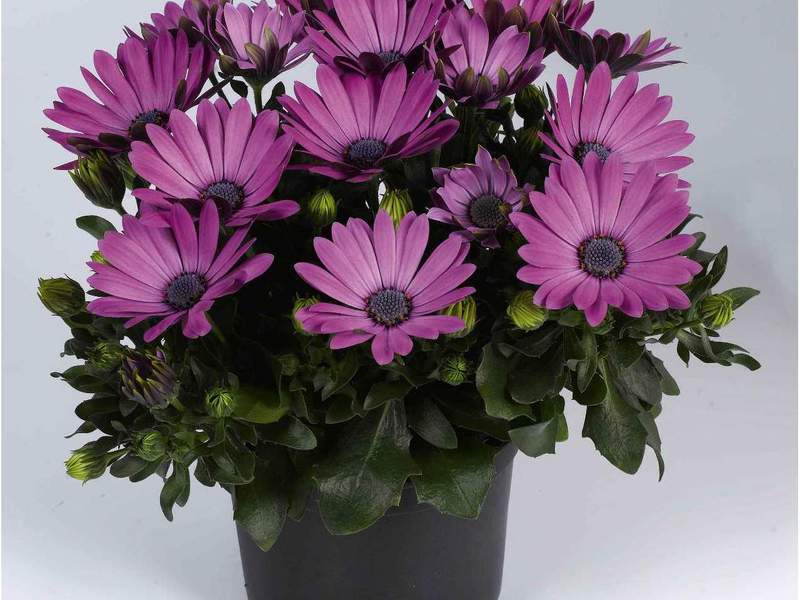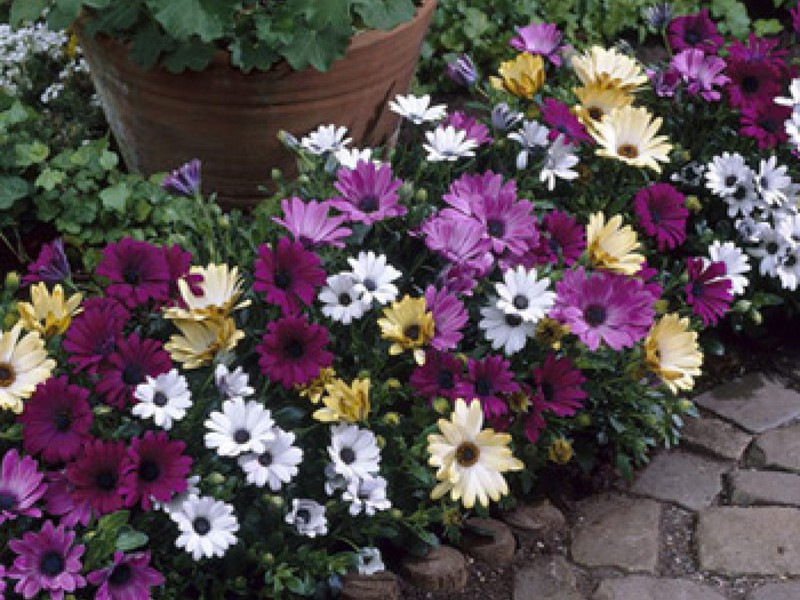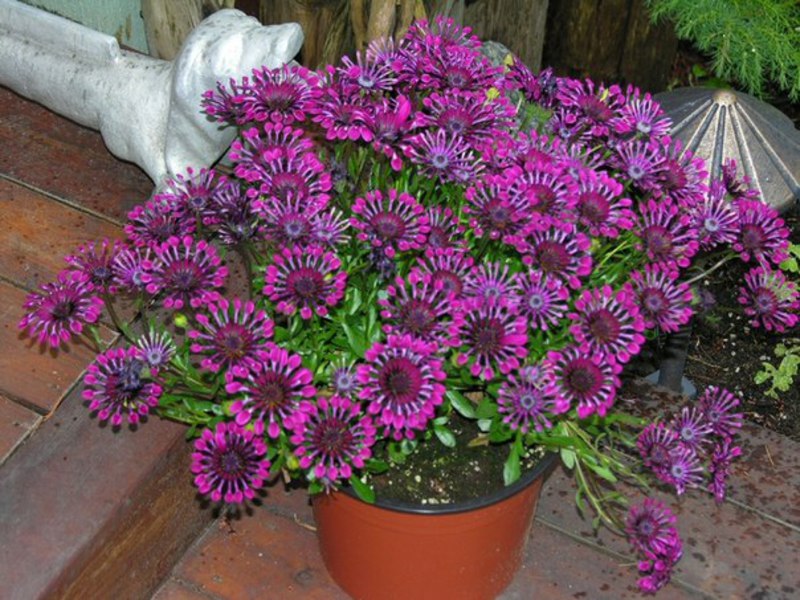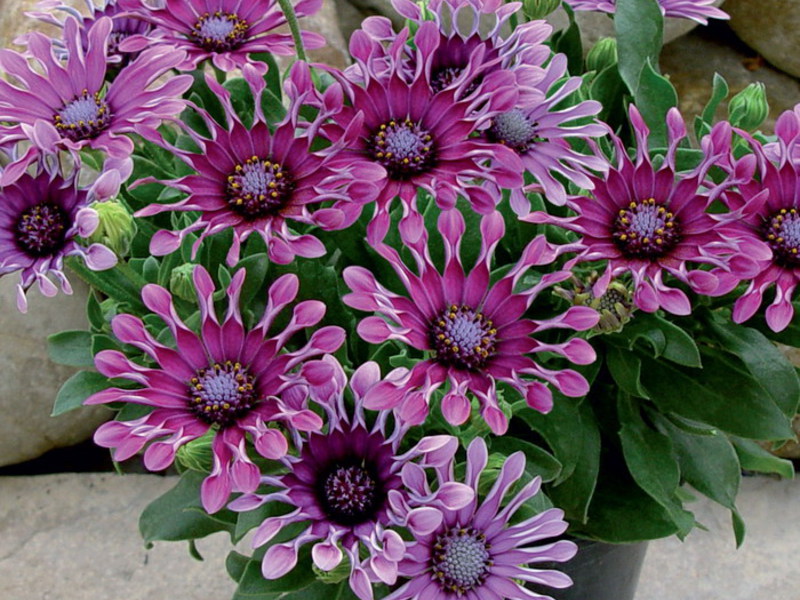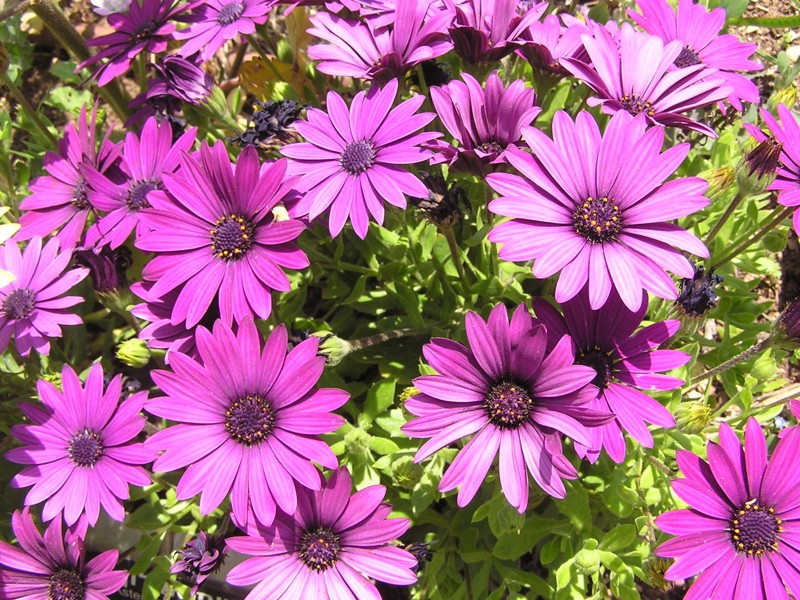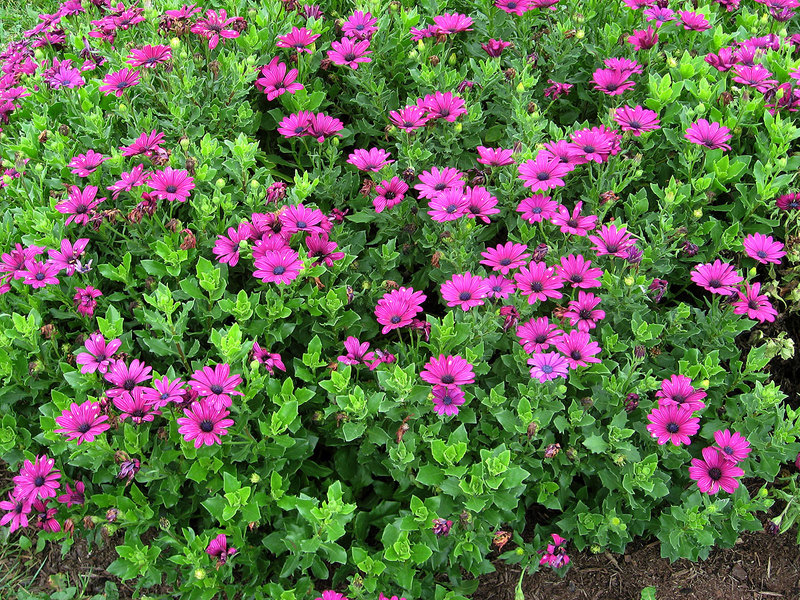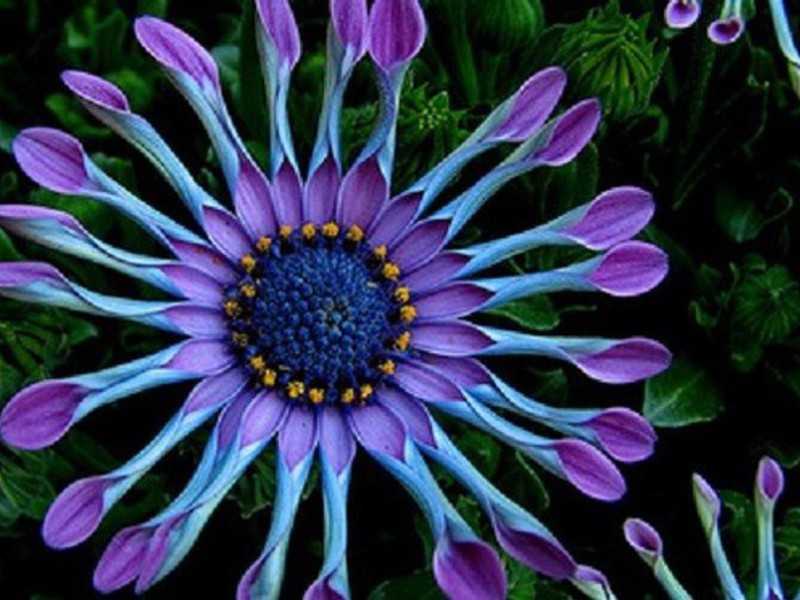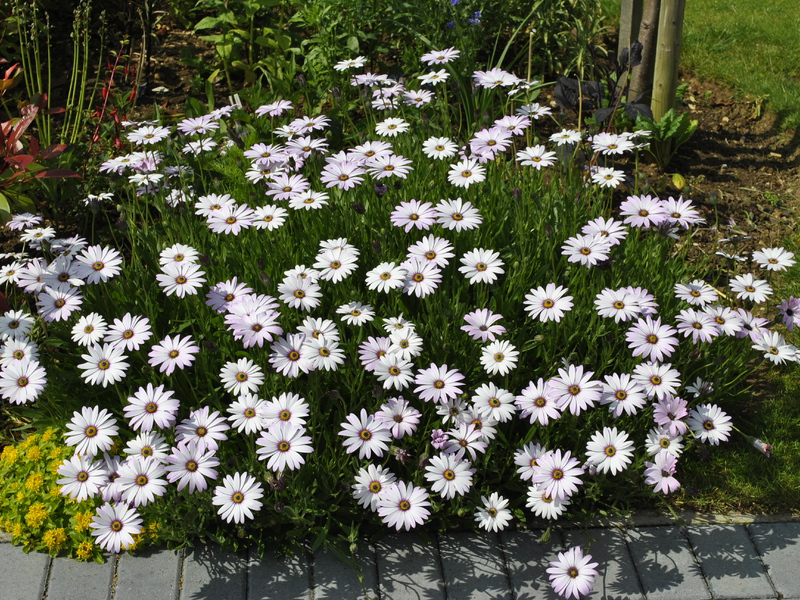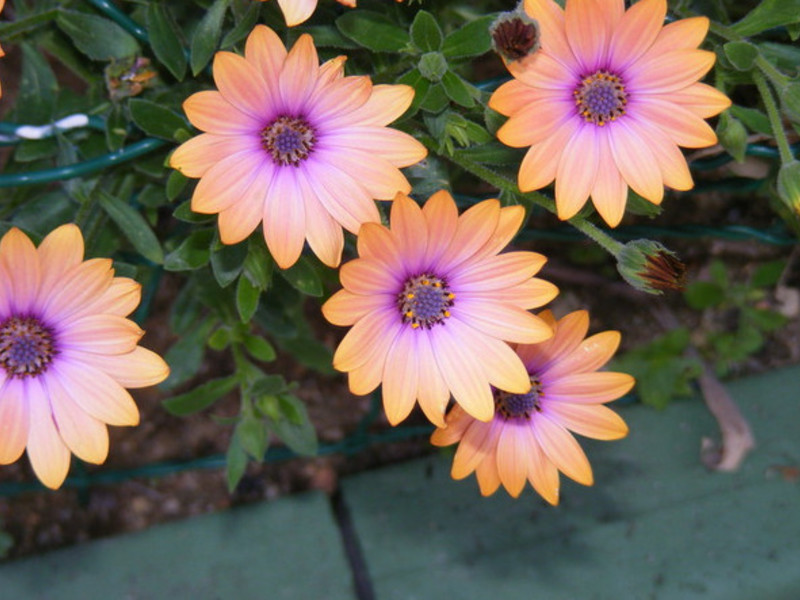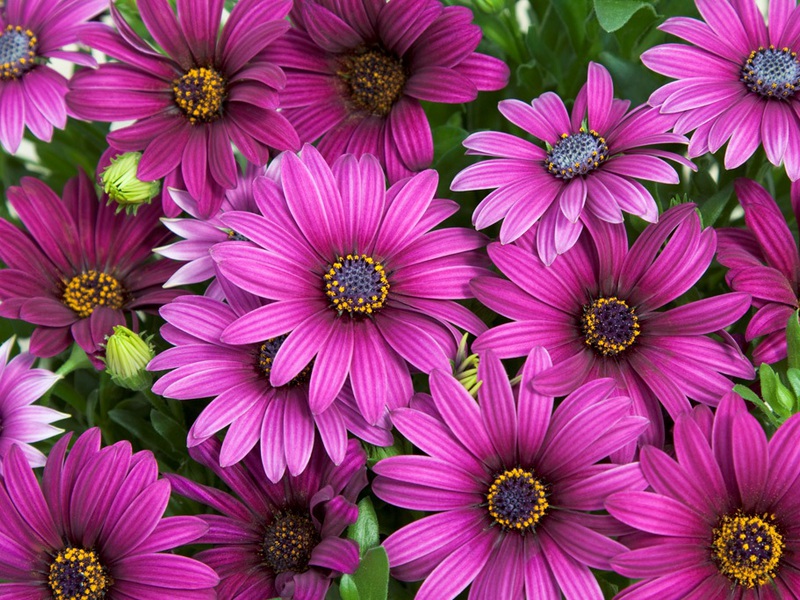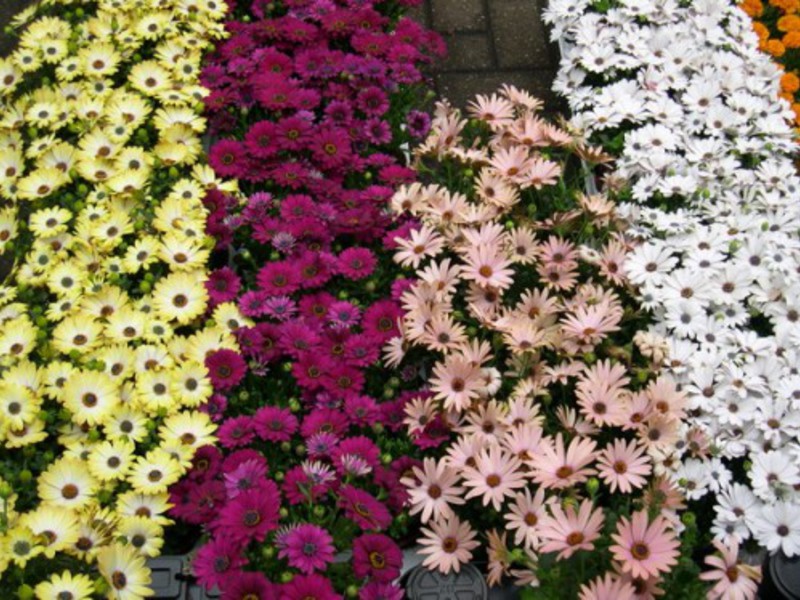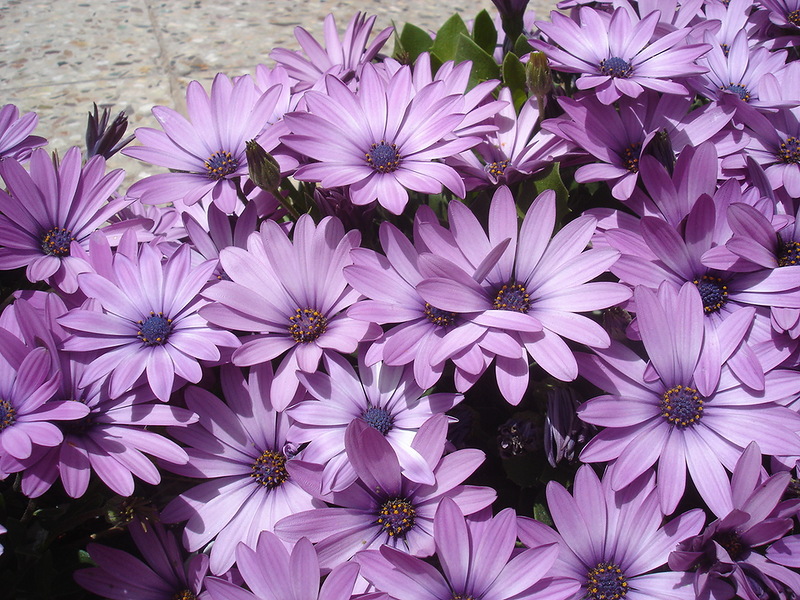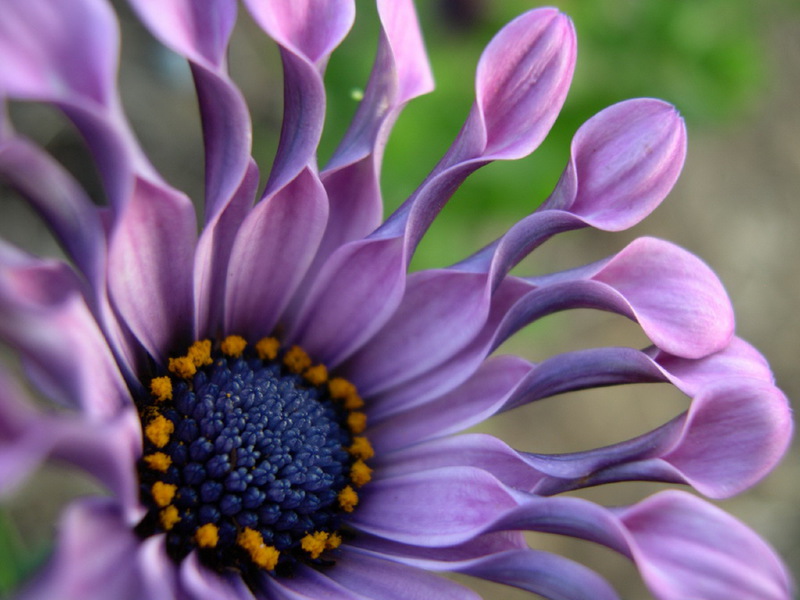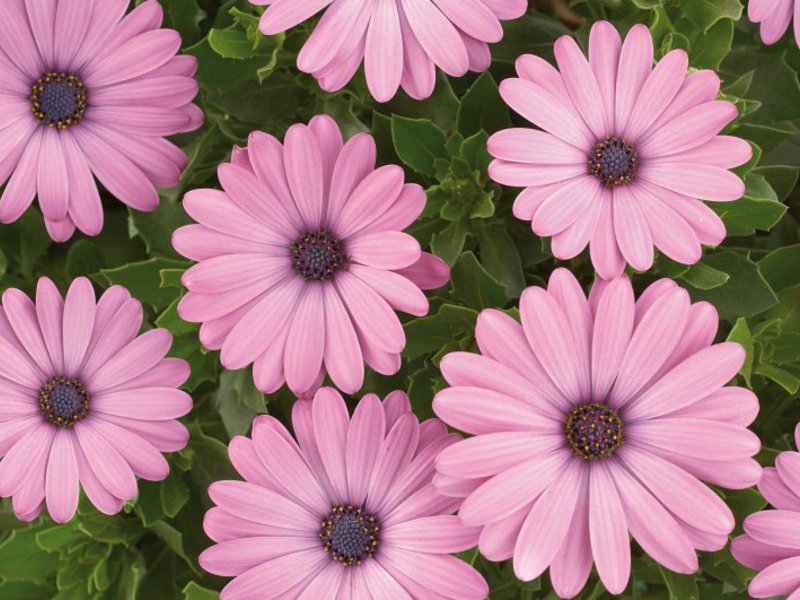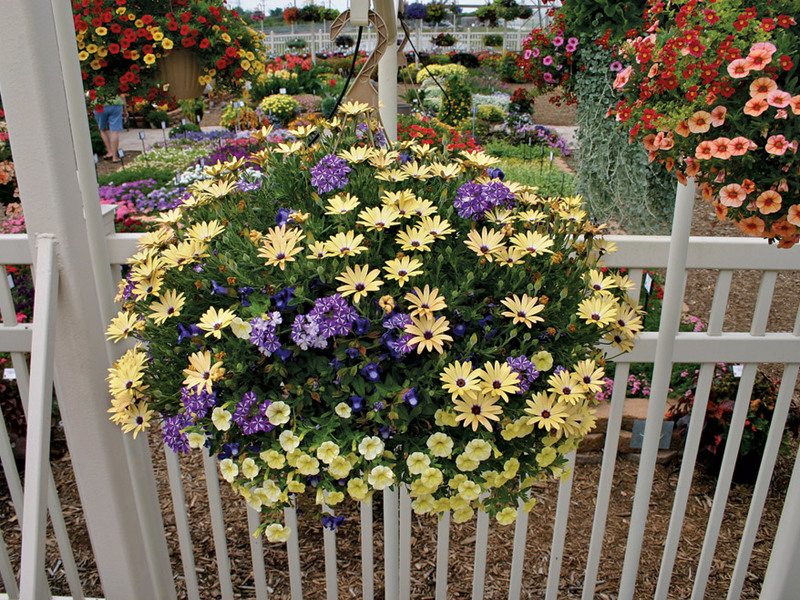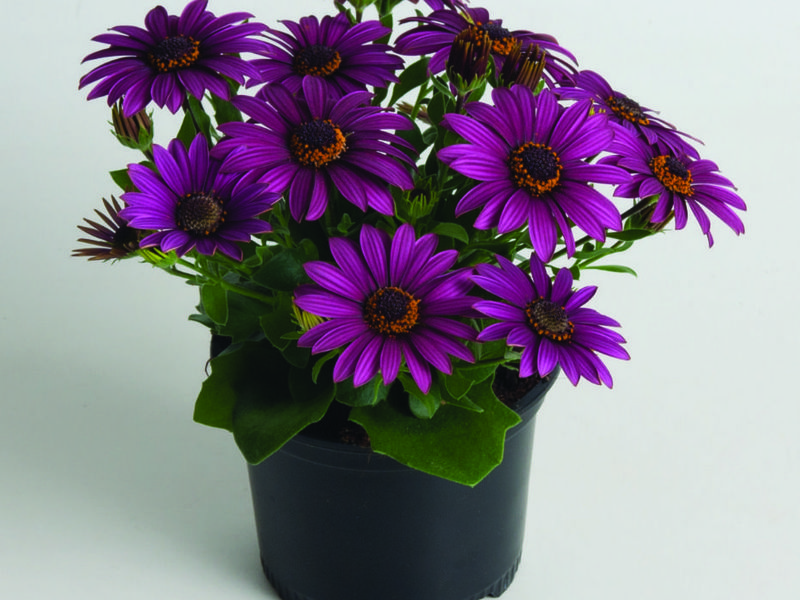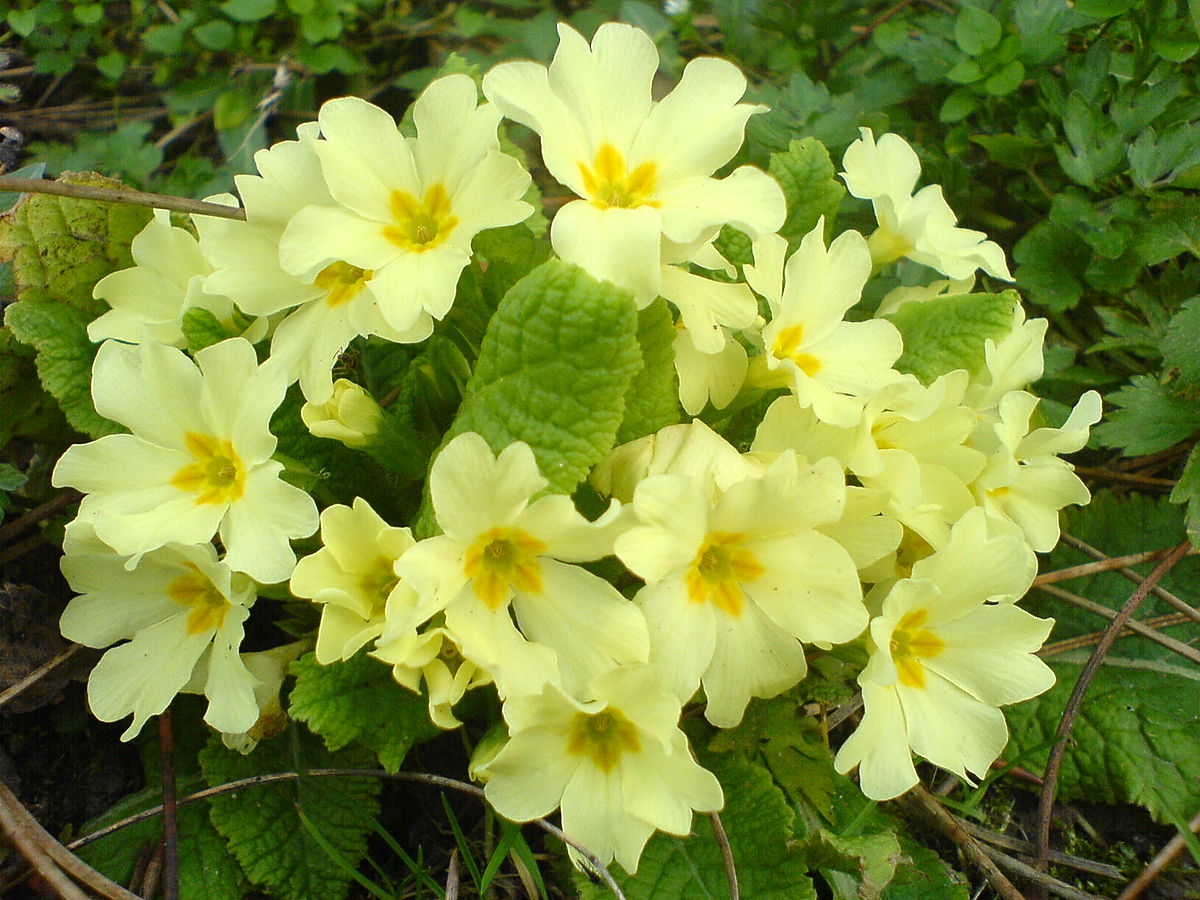The garden annual flower osteospermum belongs to the Aster family. Little known among flower growers, the plant is very similar to the popular chamomile, aster and daisy. Its homeland is African countries, therefore the second name of osteospermum is "African chamomile". In June, buds appear on the flower, which bloom and bloom until the very autumn frosts. Caring for him is very simple, and you can easily grow osteospermum for your garden plot from seeds.
Content
Osteospermum: photo, description, types
African chamomile is a large shrub with erect, branching stems covered with dense foliage. Its spatulate, irregularly toothed leaves are oblong, ovoid and can be bright green, gray or variegated.
A double or semi-double inflorescence reaches 3-8 cm in diameter. It consists of central sterile tubular and marginal ligulate flowers. Depending on the species and variety, the central flowers are usually blue or blue. The marginal flowers can be of a wide variety of colors from white to purple. Varieties with orange, yellow, purple, pink and red flowers are quite rare.
Each inflorescence lives no more than five days. But in its place, new buds are quickly formed, due to which the plant blooms continuously and for a long time. In favorable weather, flowering can continue almost until mid-autumn.
Bright flowers of osteospermum during the day in clear weather open, and are closed at night and in cloudy weather. This property of the plant protects flower pollen from the effects of night moisture or rain.
Types and varieties
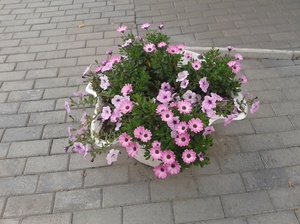 Osteospermum bushes can be of various heights and shapes, bloom with flowers with a wide variety of colors. It all depends on the type and variety, the variety of which is famous for the African chamomile. Some hybrid varieties are distinguished by the unusual shape of the reed flowers.
Osteospermum bushes can be of various heights and shapes, bloom with flowers with a wide variety of colors. It all depends on the type and variety, the variety of which is famous for the African chamomile. Some hybrid varieties are distinguished by the unusual shape of the reed flowers.
Osteospermum Eklona or Carpathian daisy is a perennial thermophilic shrubtherefore, in regions with cold winters, it is grown as an annual. The plant grows up to one meter in height, has strongly branched straight stems and decorative-toothed leaves. On the basis of the Carpathian daisy, breeders have bred many hybrid varieties, each of which differs in the shape and color of the petals and the size of the bushes.
Osteospermum conspicuous is a new species of African chamomile. Its distinctive feature is the color change of the petals as the flower blooms. In buds, they may be white, and a fully blossoming flower may have a purple color. In this case, the upper part of the petal is always lighter than the lower one. The lifespan of each flower from 10 to 15 days... After which the color of the petals becomes lighter again, and the flower withers. Osteospermum is noticeable, in comparison with the Carpathian daisy, it is more difficult to grow.
Osteospermum: growing and care
African chamomile loves well-lit areas and fertile soils. Therefore, it is necessary to select a sunny area for it and enrich it with a nutrient mixture before planting. For this in equal parts you need to mix:
- leafy ground;
- sod land;
- humus;
- sand.
The prepared nutrient soil is poured into the hole in which the plant will be planted.
Plants are thermophilic, but they can tolerate slight frosts. For the winter, some gardeners manage to dig up the bushes of the plant and store them at home in order to plant them again in the garden in the spring.
Watering and feeding
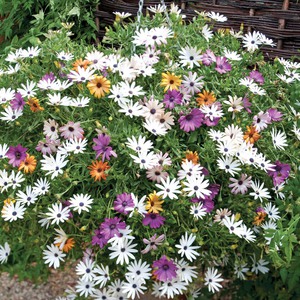 Osteosparmum is an unpretentious drought-resistant plant. He will tolerate hot weather and a temporary lack of watering calmly. However, the long lack of moisture affects flowers, which lose their terry, decorativeness and become smaller.
Osteosparmum is an unpretentious drought-resistant plant. He will tolerate hot weather and a temporary lack of watering calmly. However, the long lack of moisture affects flowers, which lose their terry, decorativeness and become smaller.
The Carpathian daisy does not like waterlogging, so when caring for it, you need to make sure that the soil dries out between waterings and water does not stagnate in it.
The key to successful cultivation and abundant flowering of osteospermum is its regular feeding. For this, mineral and organic fertilizers are used alternately. So that the rapidly growing bushes do not stretch out, but branch out, it is recommended to pinch them periodically.
In mid-summer, in hot temperatures, African chamomile can stop budding and flowering. But it will bloom profusely again literally as soon as the heat subsides.
Pests and diseases
Osteospermum is a very resistant plant, which is practically not susceptible to diseases and pests.
However, if the cultivation of the shrub takes place in the shade, where the soil is always wet, this can lead to a weakening of immunity. In this case, the plant can be susceptible to fungal diseases... Its roots will begin to rot, and the bush itself will wither. You can save osteospermum by transplanting it to a well-lit place, after pretreating the roots with special antifungal drugs.
Plants with weakened immune systems can attack aphids. The insect settles on leaves and stems, and feeds on their sap. As a result, the leaves turn yellow and fall off, and the bush itself begins to fade. Insect control should be carried out by spraying with special insecticides.
Wintering
Osteospermum in the open field can survive winters only in mild climates with temperatures not lower than -10 degrees. But if you dig a bush and grow it in a cool but bright room, then in the spring the plant can be planted back in its place in the garden. Winter care will consist only in rare watering.
Reproduction of osteospermum
Carpathian daisy can be propagated in two ways:
- seeds;
- cuttings.
Seed propagation
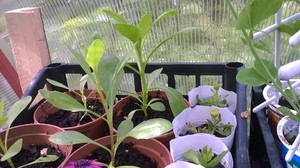 For seedlings, sowing seeds is carried out in March or April. Dry seeds are sown in peat tablets or seedling boxes with peat-sandy soil. Many people mistakenly pre-soak them, because osteoperum seeds look like ordinary seeds. But this plant really does not like waterlogging, so in the future, the shoots can rot.
For seedlings, sowing seeds is carried out in March or April. Dry seeds are sown in peat tablets or seedling boxes with peat-sandy soil. Many people mistakenly pre-soak them, because osteoperum seeds look like ordinary seeds. But this plant really does not like waterlogging, so in the future, the shoots can rot.
Seeds are laid to a depth of no more than 0.5 cm. To do this, you can use a skewer or a toothpick by pushing them into the wet soil. A box covered with glass or polyethylene is placed in a warm place with a temperature of at least + 20- + 22 degrees. The first shoots should appear on the fifth or seventh day after planting.
Seedling care osteopermum is as follows:
- The seedling container is placed in a well-lit but cooler place.
- Seedlings are regularly watered, but care must be taken to ensure that no water stagnates in the soil.
- After the appearance of the second or third true leaf, the seedlings are seated in separate containers. If they are very stretched, then you can gently bend the stalk, put it in the groove and cover it with earth.
- You can slow down the pulling and provoke a more lush flowering by pinching the plant after a dive.
- With the onset of the last spring month, seedlings at home should be hardened. In this case, it is taken out to the glazed loggia or the vents are opened.
At the end of May, seedlings can be planted in a permanent growing area. The distance between young bushes should be at least 20-25 cm. In the first few days, care consists in watering the plant in the morning and evening.
Cuttings
 Cuttings are harvested from osteospermum bushes dug up in autumn and preserved until spring. With their help, from one bush you can get several unpretentious, beautifully flowering annuals.
Cuttings are harvested from osteospermum bushes dug up in autumn and preserved until spring. With their help, from one bush you can get several unpretentious, beautifully flowering annuals.
Cuttings 5-7 cm long cut with a sharp knife. The lower leaves are removed and the pieces are inserted into a container with a damp substrate. You can use vermiculite, perlite, or moss with hydrogel.
The cuttings are covered with polyethylene or glass containers and placed in a well-lit, warm place. They need to be ventilated every day, and the soil should be sprayed regularly. Which cuttings have taken root can be seen in about ten days.
Unpretentious in care, beautiful and long-flowering osteosparmums are ideal for decorating flower beds and borders in the garden, decorating balconies and loggias, flower beds near the entrances. The Carpathian daisy planted in a hanging planter can be grown even at home.
